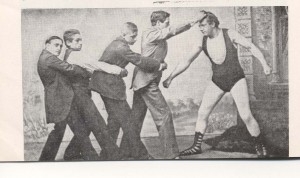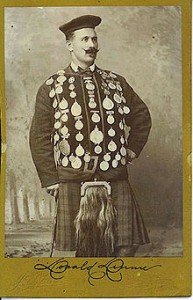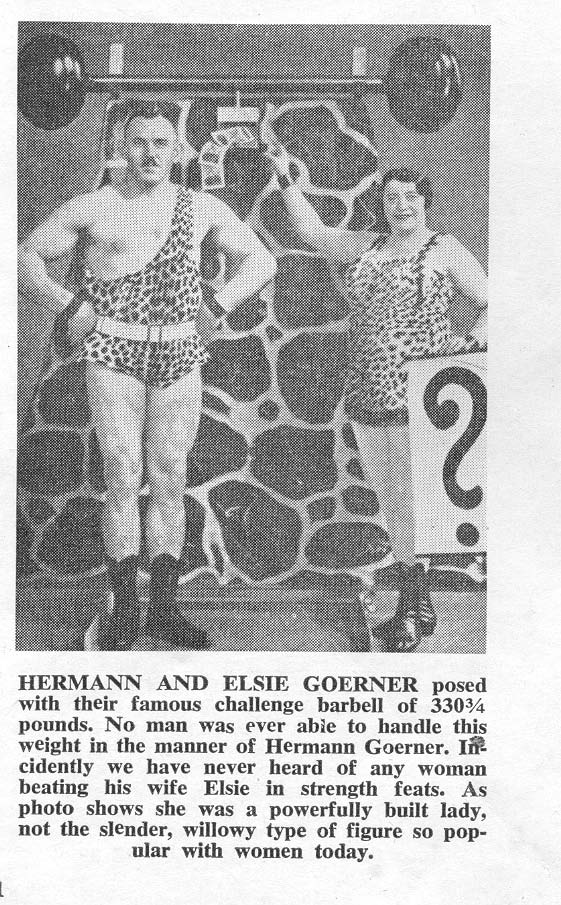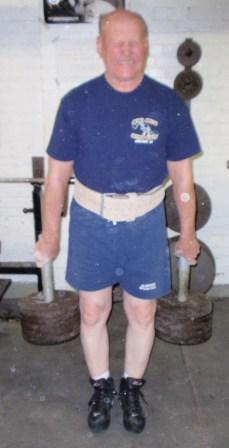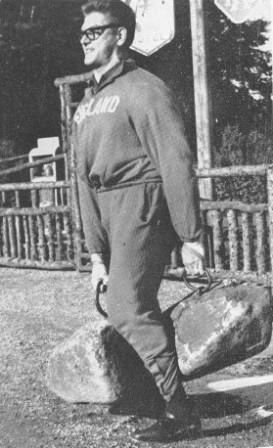Real All-Round Strength
by Thom Van Vleck
Prof. Anthony Barker is not one of the most well known strongmen. He is perhaps better known by those he influenced, namely Warren Lincoln Travis and Bernarr McFadden, to name a couple.
Barker also practiced early “All Around Strength”. He was famous for not only having strong muscles, but being strong all over! He would do all the “normal” strongman training, but he would also train his jaws with teeth lifting, he would practice lifting with his hair, he did deep breathing to develop his lungs, he was even know to work on developing the muscles in his face!
He claimed to have done 500lbs in the teeth lift and a one arm bent press of 250lbs. He was said to “cultivate” his “luxuriant, wavy hair” and massaged his scalp daily as part of his training. He would allow any man to jump for 6 feet onto his stomach as he lay on the floor. He would roll spoons and crumble china plates to increase his hand strength. He was an expert boxer and was said to have hit the heavy weight champ Bob Fitzsimmons so hard he knocked him across the room! Fitzsimmons had beat Jim Corbett and was the first ever three division champ….so he was no slouch. Barker would even allow a helper to jump off a 4 ft height right on his face to prove his well developed facial muscles. Barker also did all the feats of lifting people in every way imaginable. One of his favorite feats was to lift a 250lb barbell on his shoulders and then have two big men hang on the ends. He would begin to twirl around often sending them flying!
Now, today, I think we realize that some of his “strength”, such as his hair, was more genetic than developed and I don’t think I’m going to let anyone jump on my face any time soon (even if it might be an improvement). But really, have we lost something becoming so specialized in our training? In the USAWA we pride ourselves on having literally hundreds of lifts that can be competed and records recorded. But the old time “All-Rounders” literally “DID IT ALL”. My grandfather trained that way, coming up with all kinds of unique physical feats and stunts to challenge himself. Now I’m beginning to think that the Old Timers had it right.
So, be like Prof. Barker, and think like a real All-Rounder!
